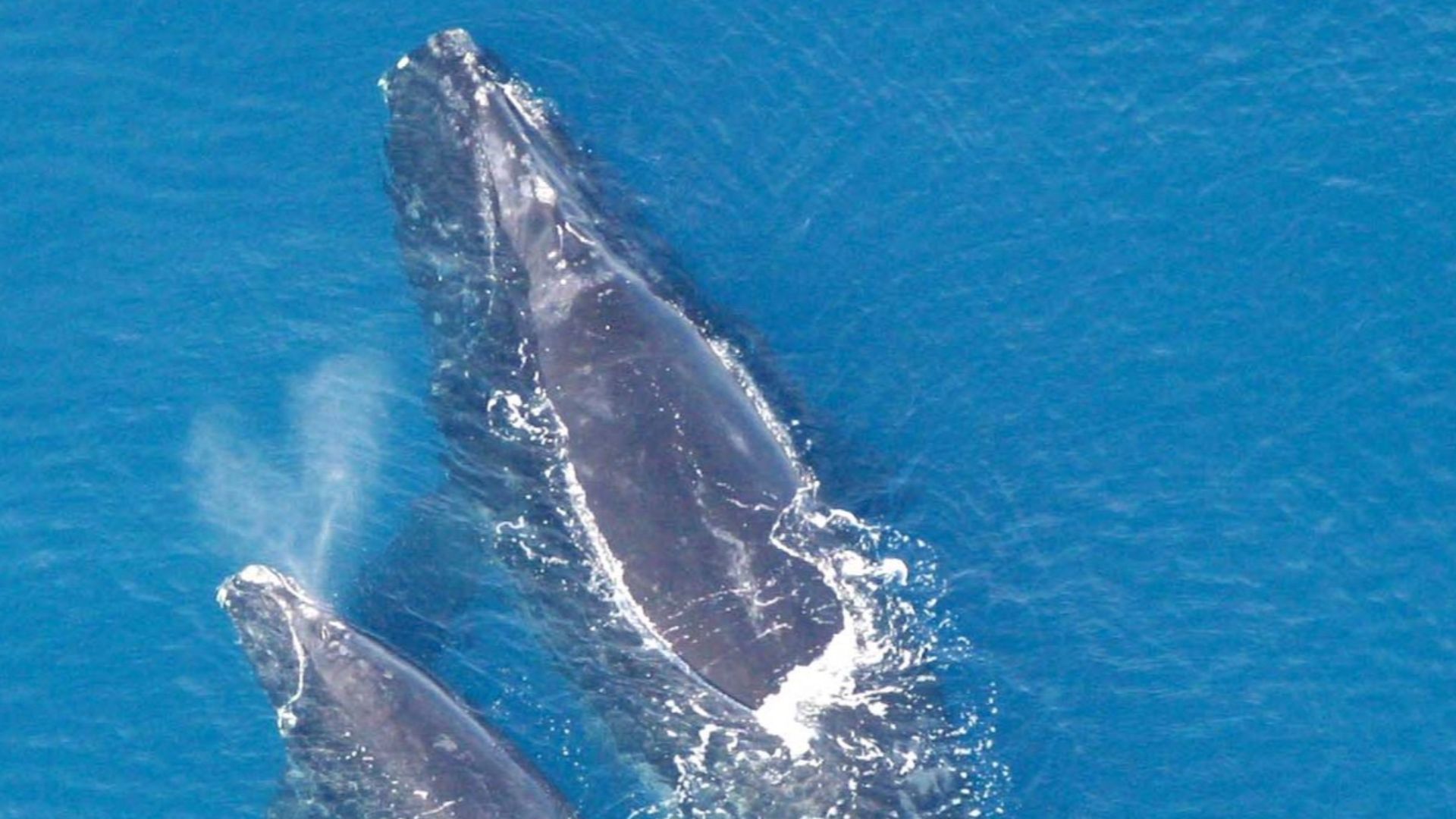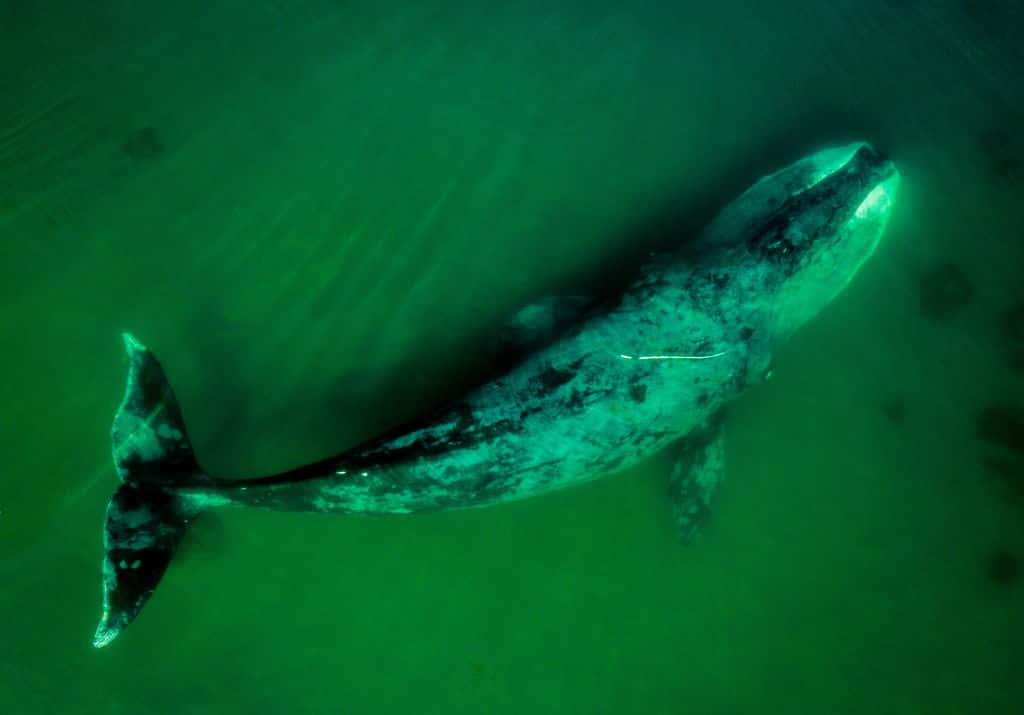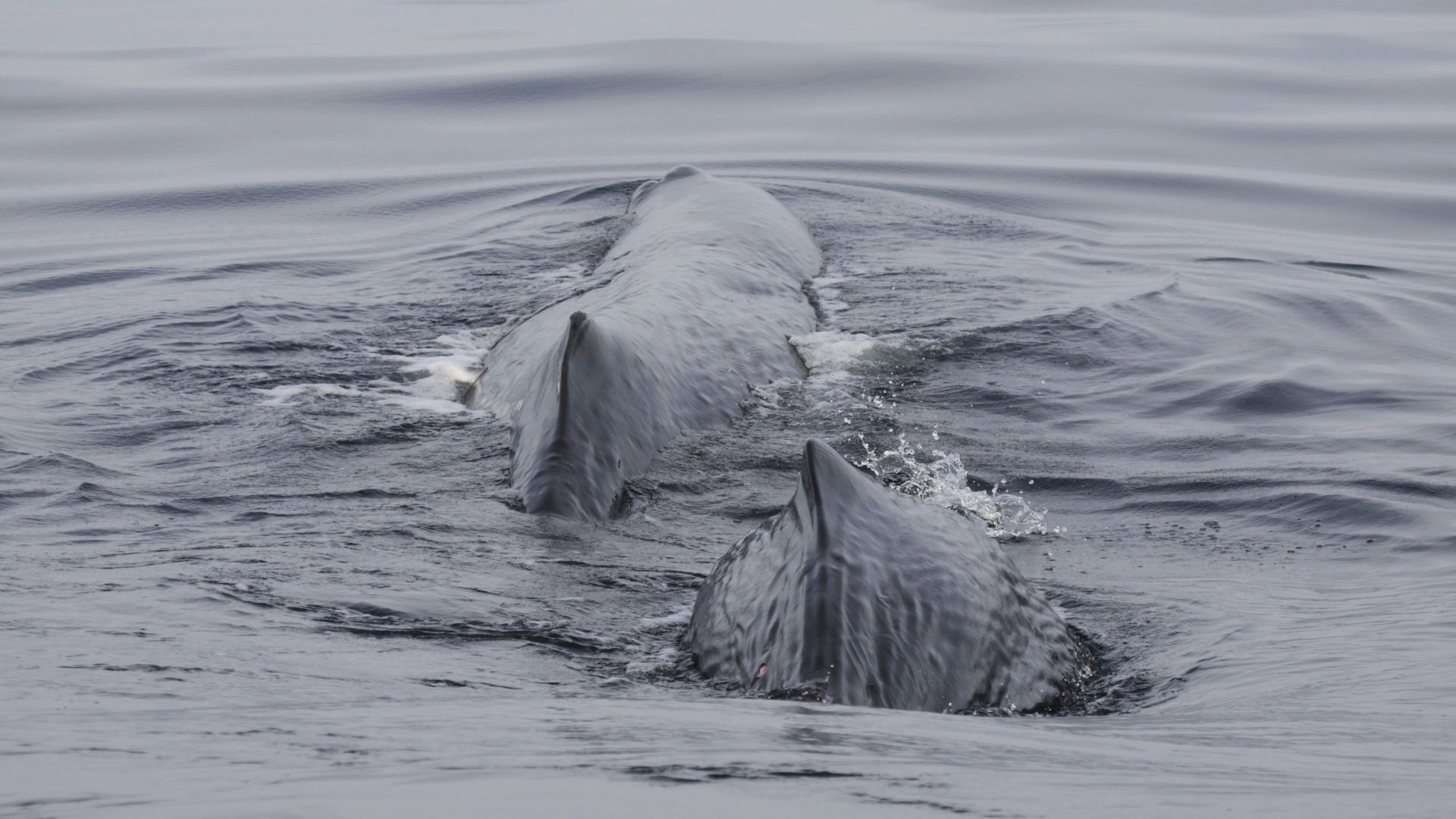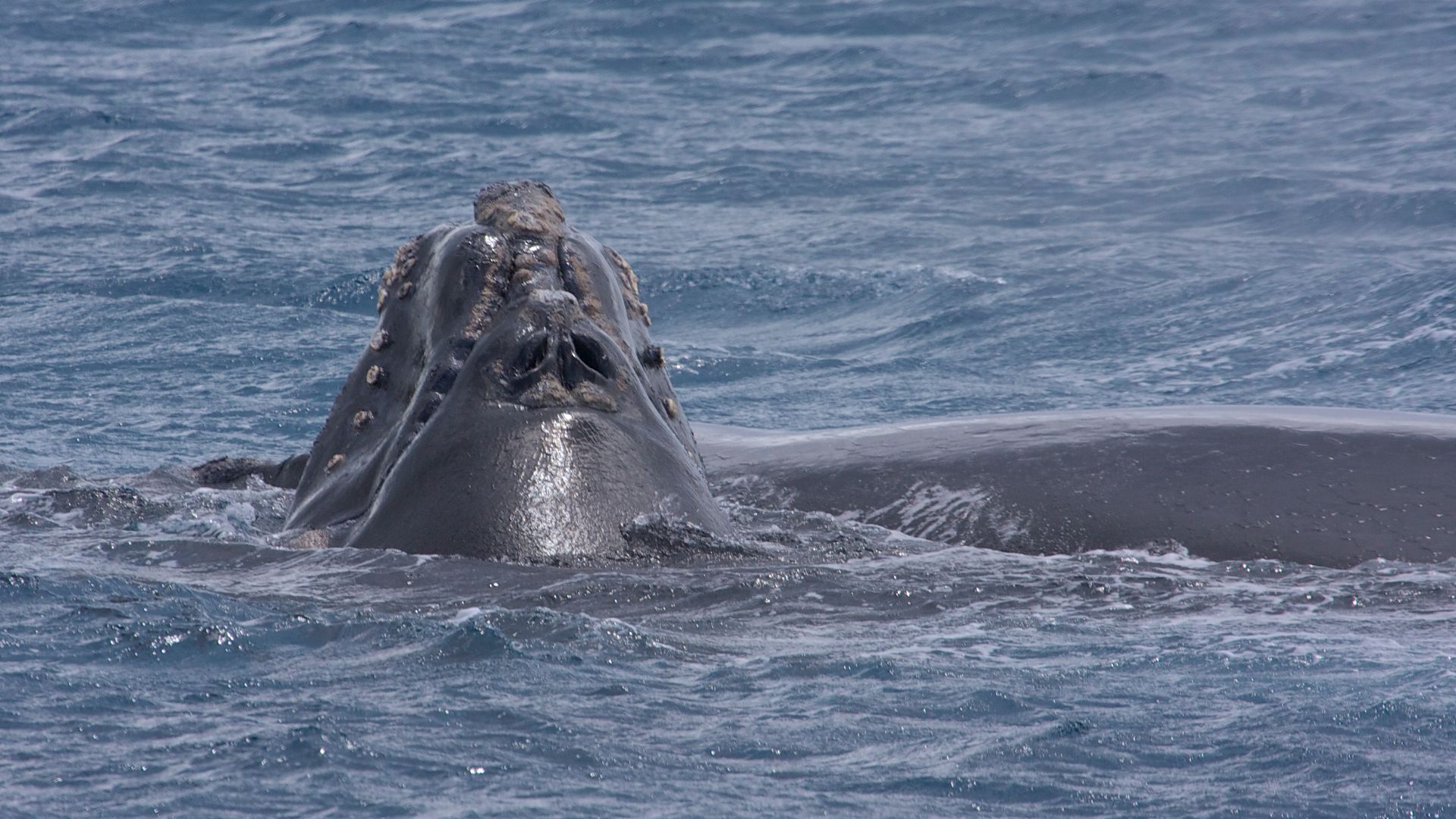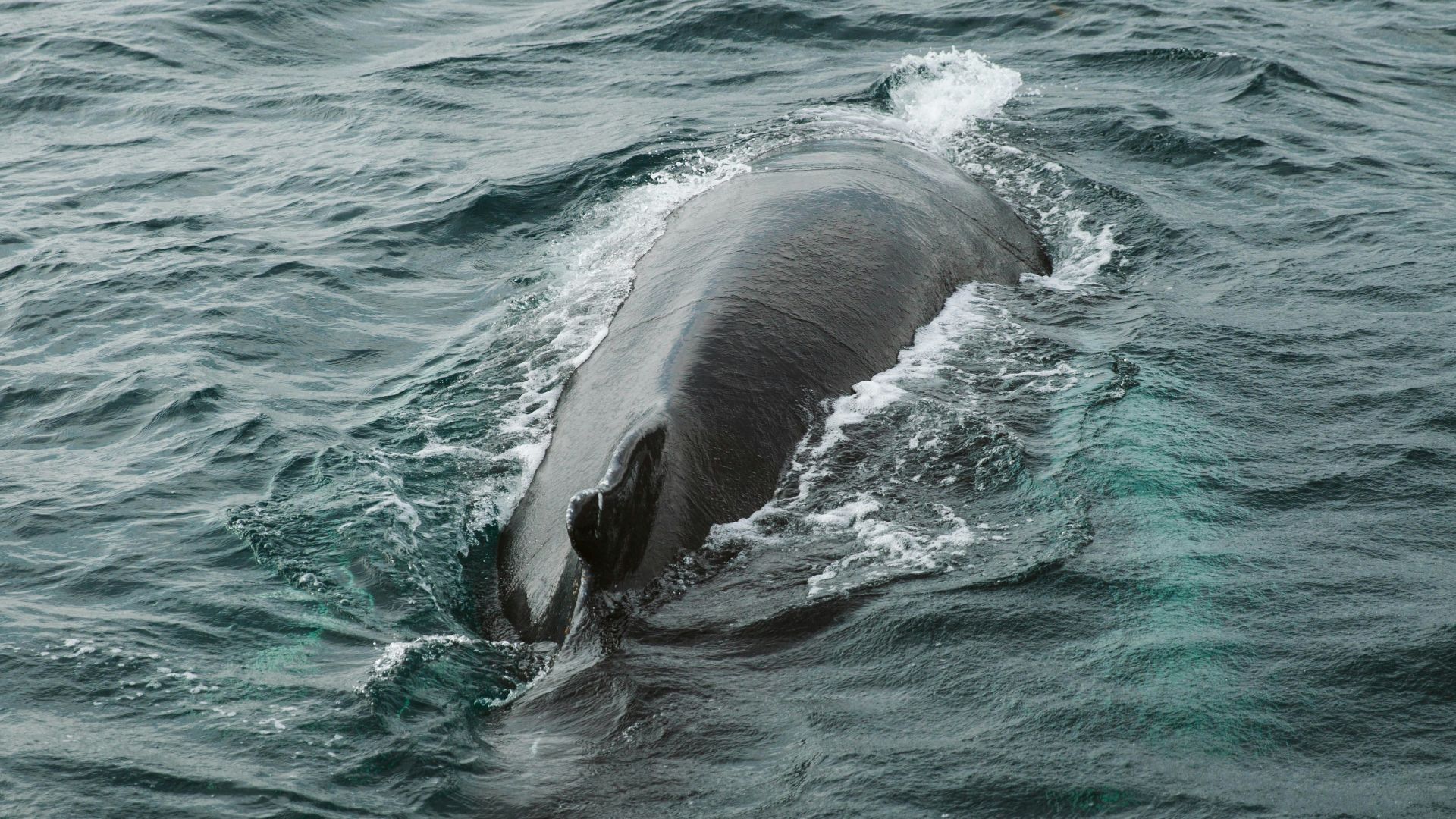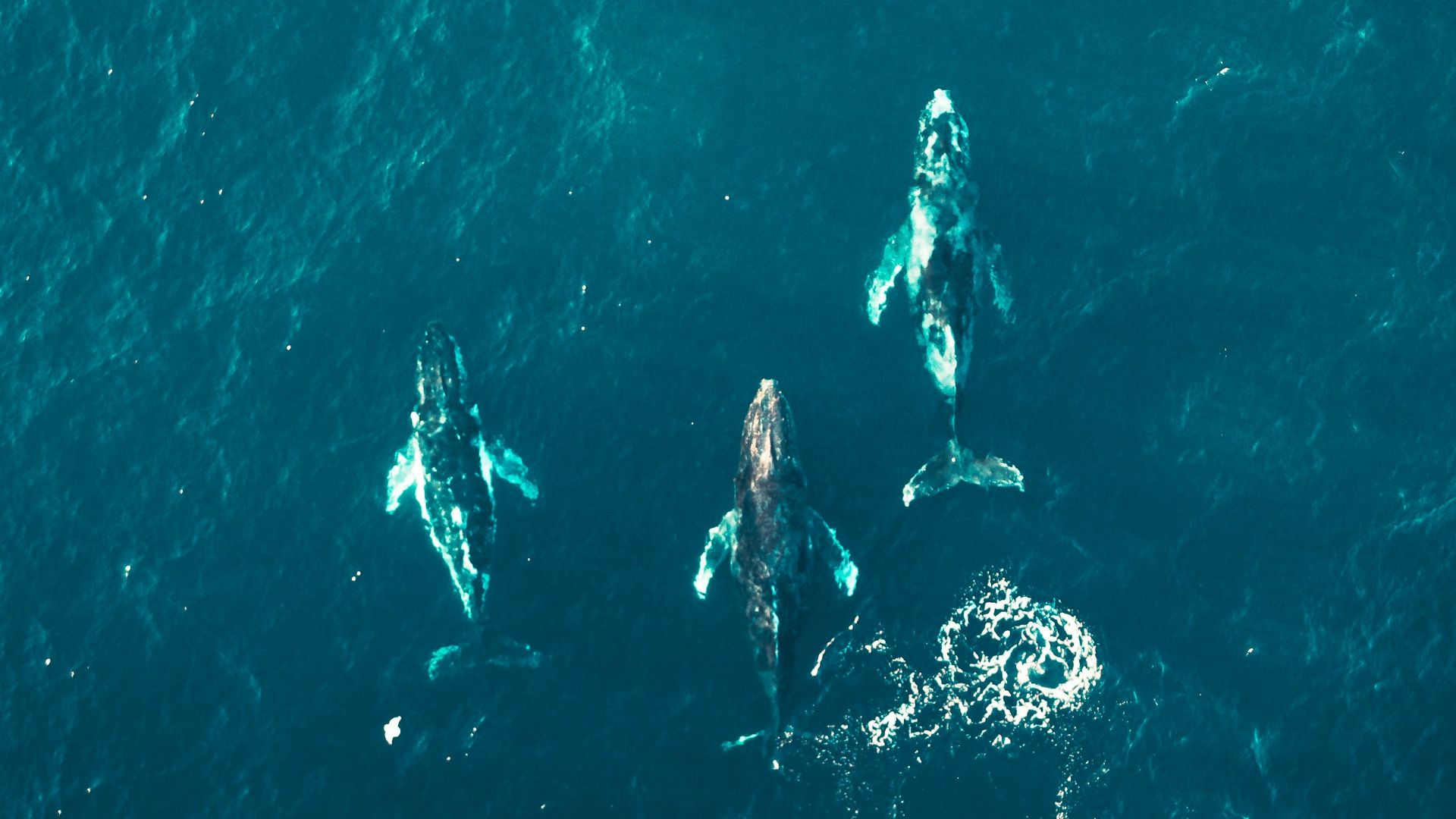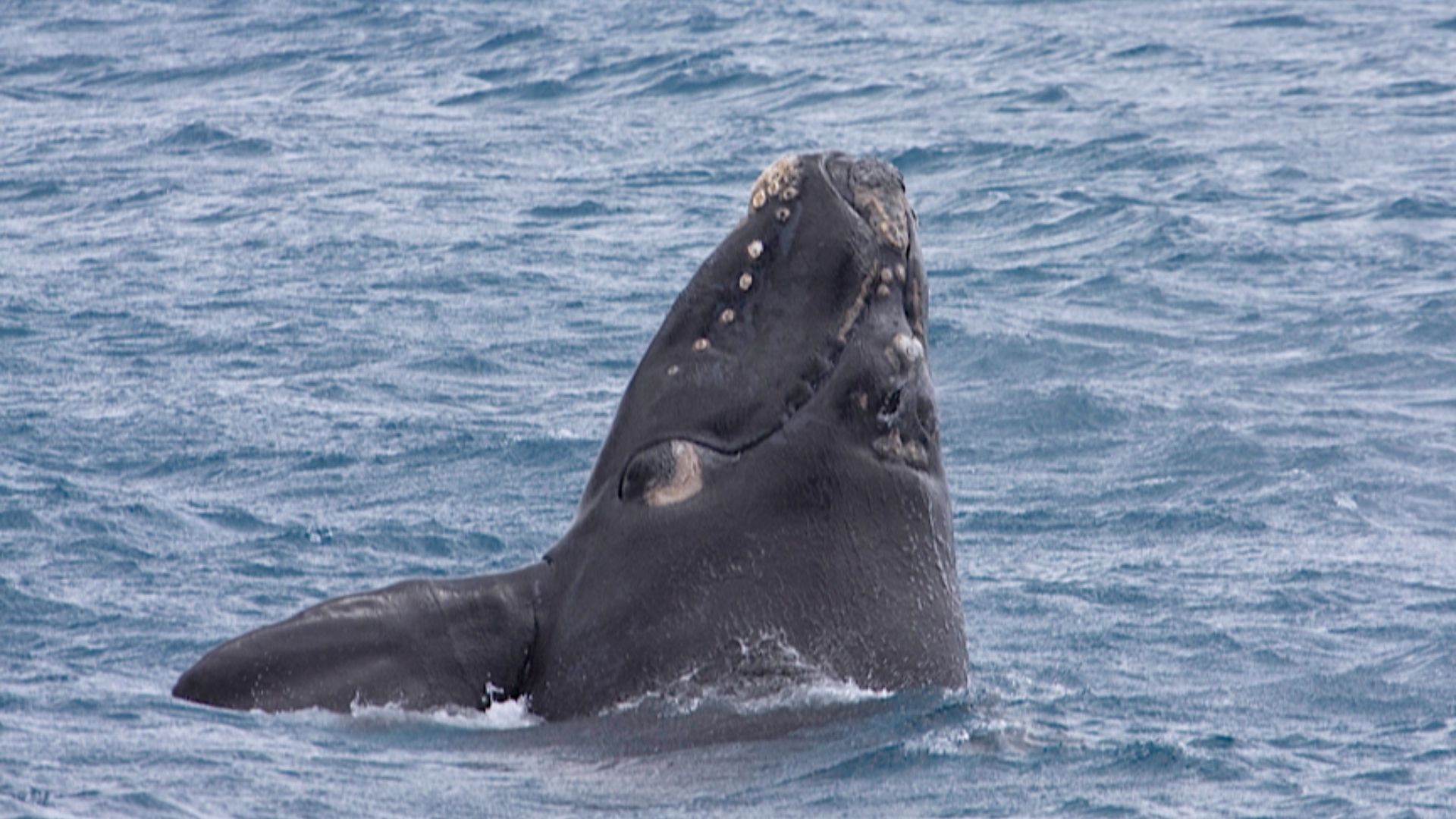Sudden Appearance In The Gulf Coast
The Gulf of Mexico is not known for hosting North Atlantic right whales. These giants stick to the Atlantic, following a predictable path. But when two of them were spotted cruising near Alabama, researchers did a double take.

The Unlikely Travel Companions
Koala and Curlew are no ordinary whales. These two adult females have been identified by their unique markings. Koala has a callosity patch shaped like a koala bear, and Curlew’s scar resembles the beak of a wading bird. Among around 370 documented individuals according to NOAA, these two are well-known.
 Koala and Curlew, January 3 & 5, 2025 by Marineland Right Whale Project
Koala and Curlew, January 3 & 5, 2025 by Marineland Right Whale Project
Who Seem To Be Inseparable
Despite being unrelated, these two have been traveling together for months. This is a rare sight among right whales, which typically migrate alone or with calves. However, this isn’t what made scientists scratch their heads when they were last spotted.
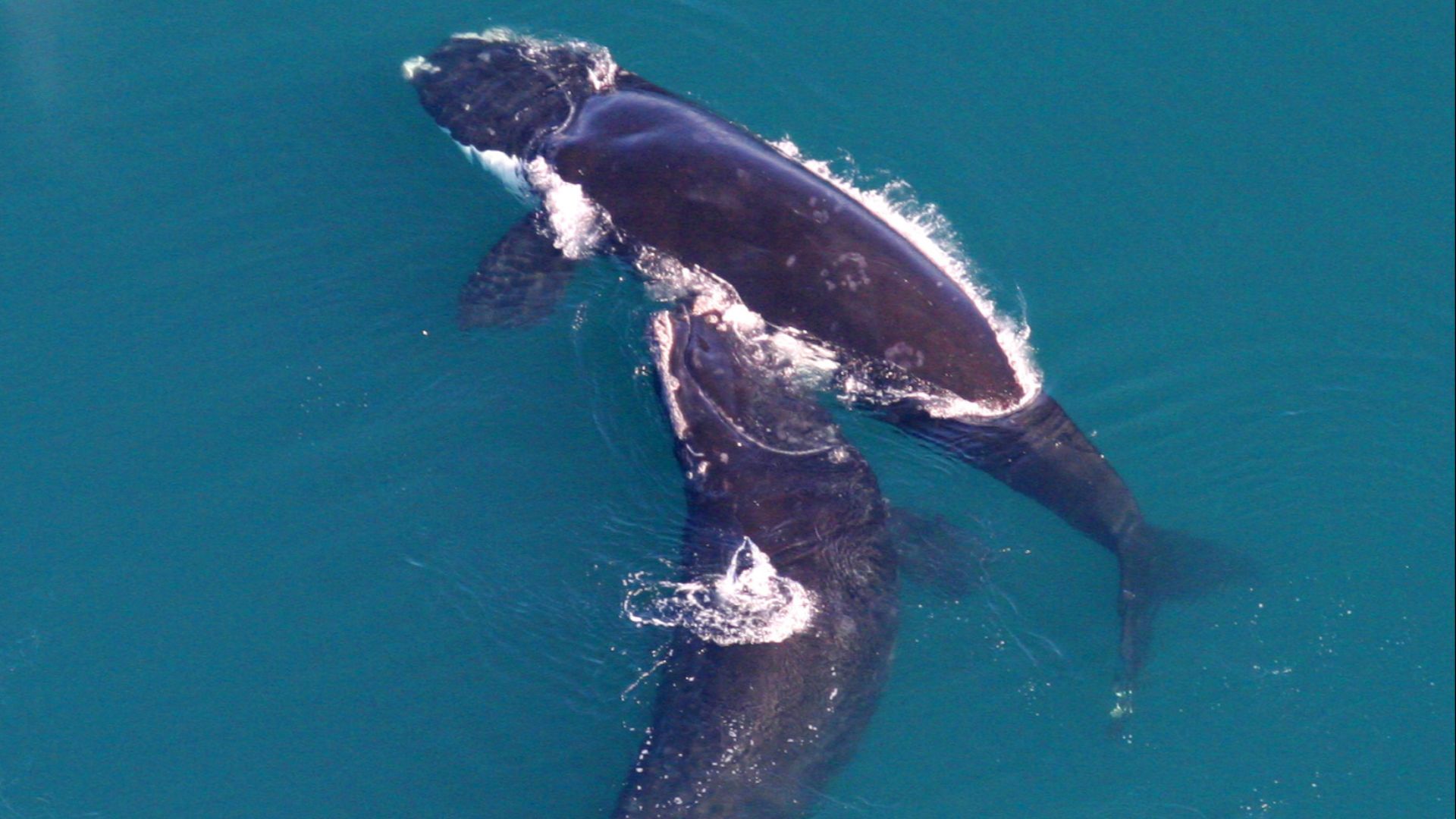 National Marine Sanctuaries, Wikimedia Commons
National Marine Sanctuaries, Wikimedia Commons
The Quiet Giants Of The Ocean
Unlike other species that communicate through complex songs, North Atlantic right whales are quieter. Scientists believe this could be an evolutionary adaptation to avoid predators like orcas. They rely on low-frequency sounds and body movements to communicate, which makes it difficult to track them in the wild.
A Routine Migration—Until It Wasn’t
Every winter, pregnant female right whales leave the cold waters of New England and Nova Scotia for the milder Atlantic coast of Georgia and Florida, where they give birth. But Koala and Curlew weren’t seen with calves, and instead of stopping in Florida, they kept going—right past their usual range.
 Koala and Curlew, January 3 & 5, 2025 by Marineland Right Whale Project
Koala and Curlew, January 3 & 5, 2025 by Marineland Right Whale Project
First Sightings On The East Coast
Their journey first raised eyebrows when they were spotted off the coast of South Carolina in late 2024. Right whales in that region weren’t unusual, but these two were sticking together. By January 12, 2025, they had reached Boynton Beach, Florida.
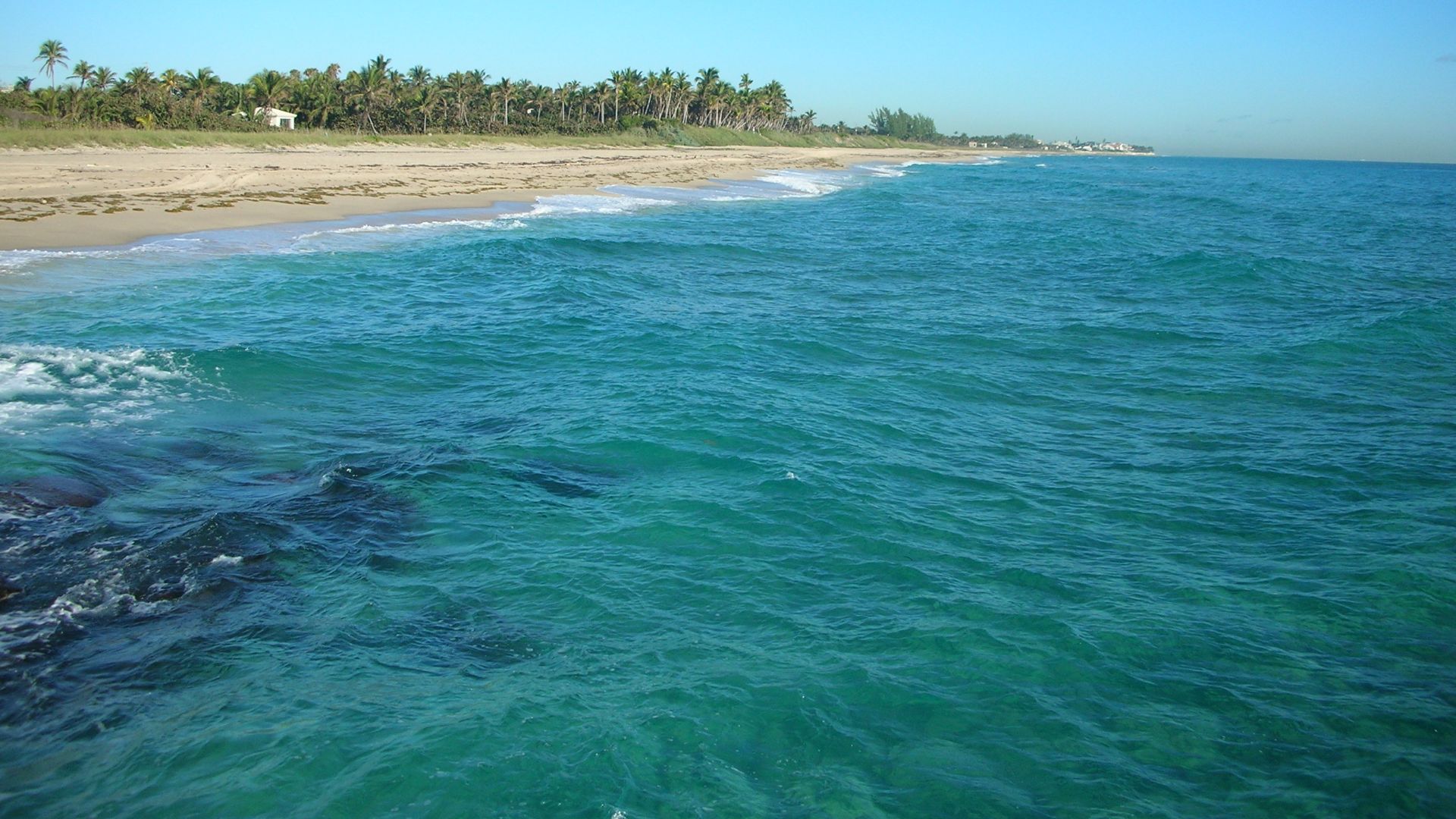 Dominic Sherony, Wikimedia Commons
Dominic Sherony, Wikimedia Commons
Vanished Without A Trace
For several weeks, scientists had nothing—no sightings, no tracking pings, no reports. The lack of reports suggested they had either gone deep offshore or taken an unprecedented turn. As it turns out, they had done the latter, slipping unnoticed around the southern tip of Florida.
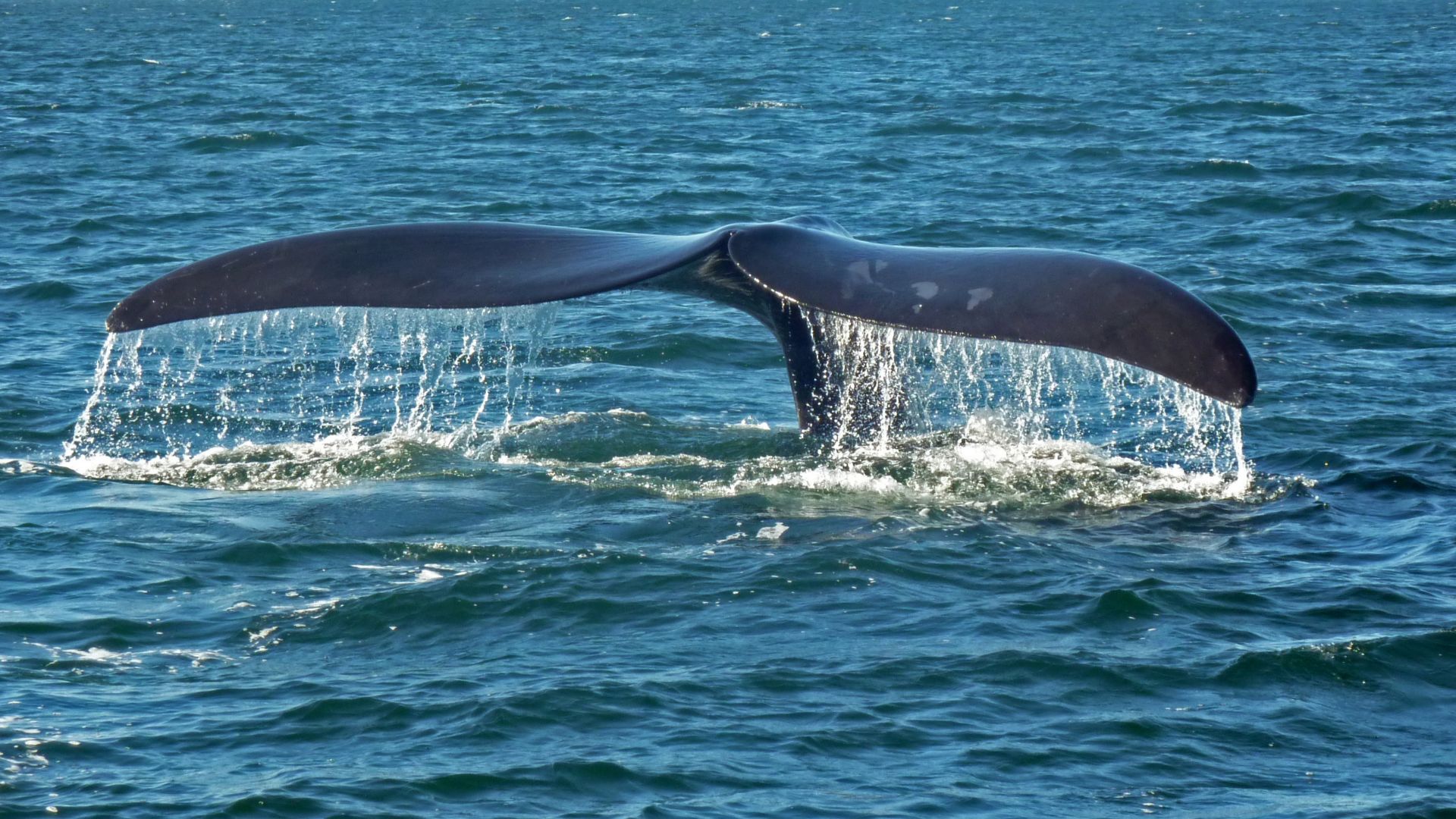 photo: Dr.Hausderivative work: an-d (talk), Wikimedia Commons
photo: Dr.Hausderivative work: an-d (talk), Wikimedia Commons
Reappearing In The Gulf
On February 2, 2025, Koala and Curlew stunned researchers when they were spotted near Perdido Pass, Alabama. Right whales almost never enter the Gulf of Mexico, and yet, here they were. Local boaters were the first to report them, and scientists confirmed this misplaced puzzle piece in marine biology.
Why Is This So Unusual?
Right whales head south in winter, but they don’t cross into the Gulf. Their calving grounds are near Florida and Georgia, and their food sources are in northern waters. Scientists couldn’t recall a single case of two adult females independently making this journey. Something had led them here, but what?
 Species in the Spotlight: North Atlantic Right Whale by NOAA Fisheries
Species in the Spotlight: North Atlantic Right Whale by NOAA Fisheries
Have Other Right Whales Ever Gone This Far?
The last known right whale confirmed in the Gulf was a mother named Boomerang, who reached Texas with her calf in 2006 before returning east. There have been a few unverified reports over the years, but nothing like this. Unlike Boomerang, Koala and Curlew weren’t accompanied by calves.
 Southern right whales can live to over 130 years old: new research by Guardian Australia
Southern right whales can live to over 130 years old: new research by Guardian Australia
The Reason Is A Mystery
Some marine biologists wondered if Koala and Curlew were testing a new migration route. Others suspected they had simply taken a wrong turn, misled by shifting water temperatures or ocean currents. Whatever the reason, their path was rewriting what scientists thought they knew about this species.
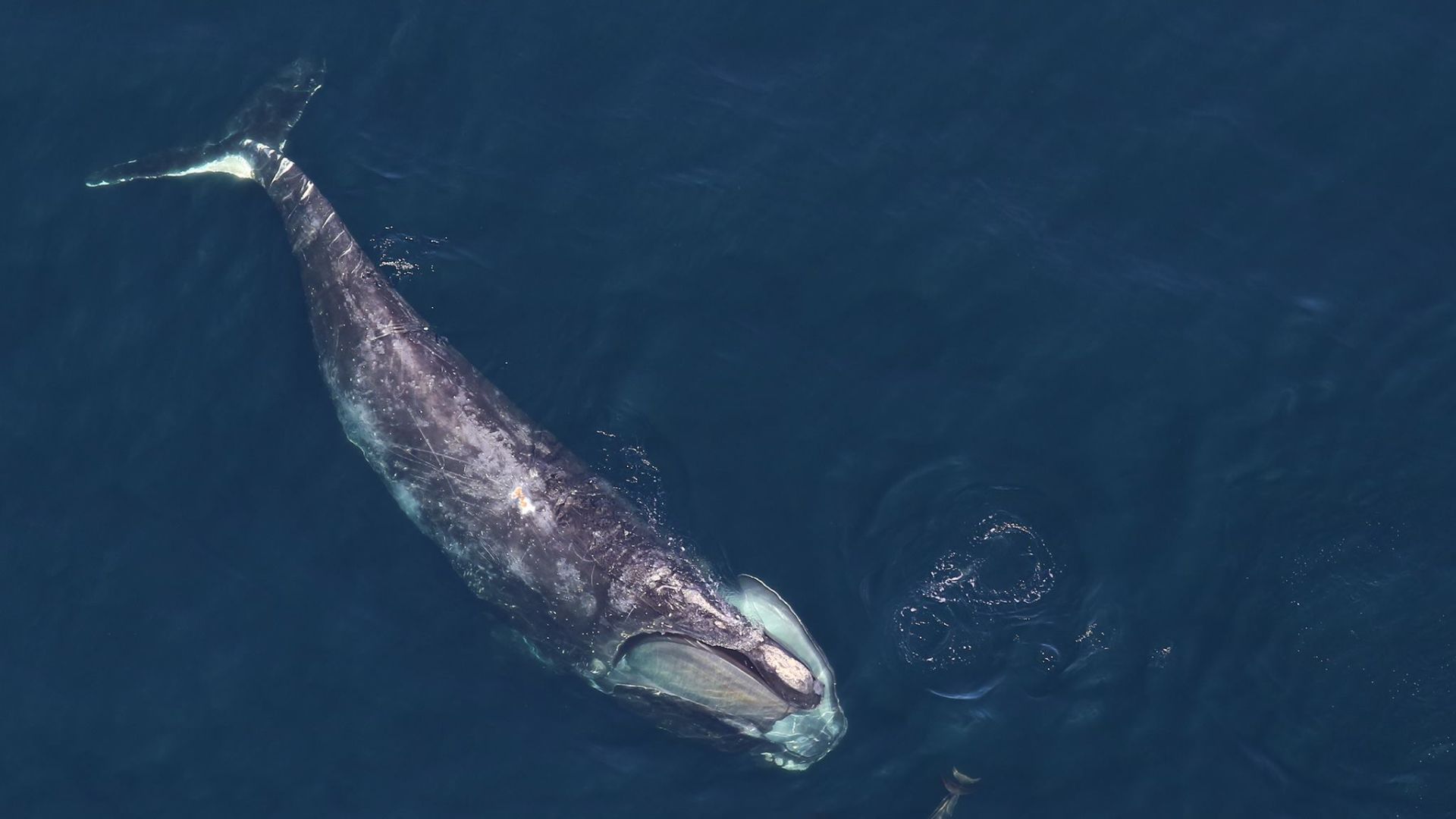 NOAA Gray's Reef NMS, Wikimedia Commons
NOAA Gray's Reef NMS, Wikimedia Commons
Could Climate Change And Shifting Food Sources Be The Culprit?
Warming oceans have forced marine animals to change their routes in search of food. Right whales feed on tiny crustaceans called copepods, which thrive in specific conditions. If warming waters altered copepod populations, Koala and Curlew might have kept swimming south, expecting to find food that wasn’t there.
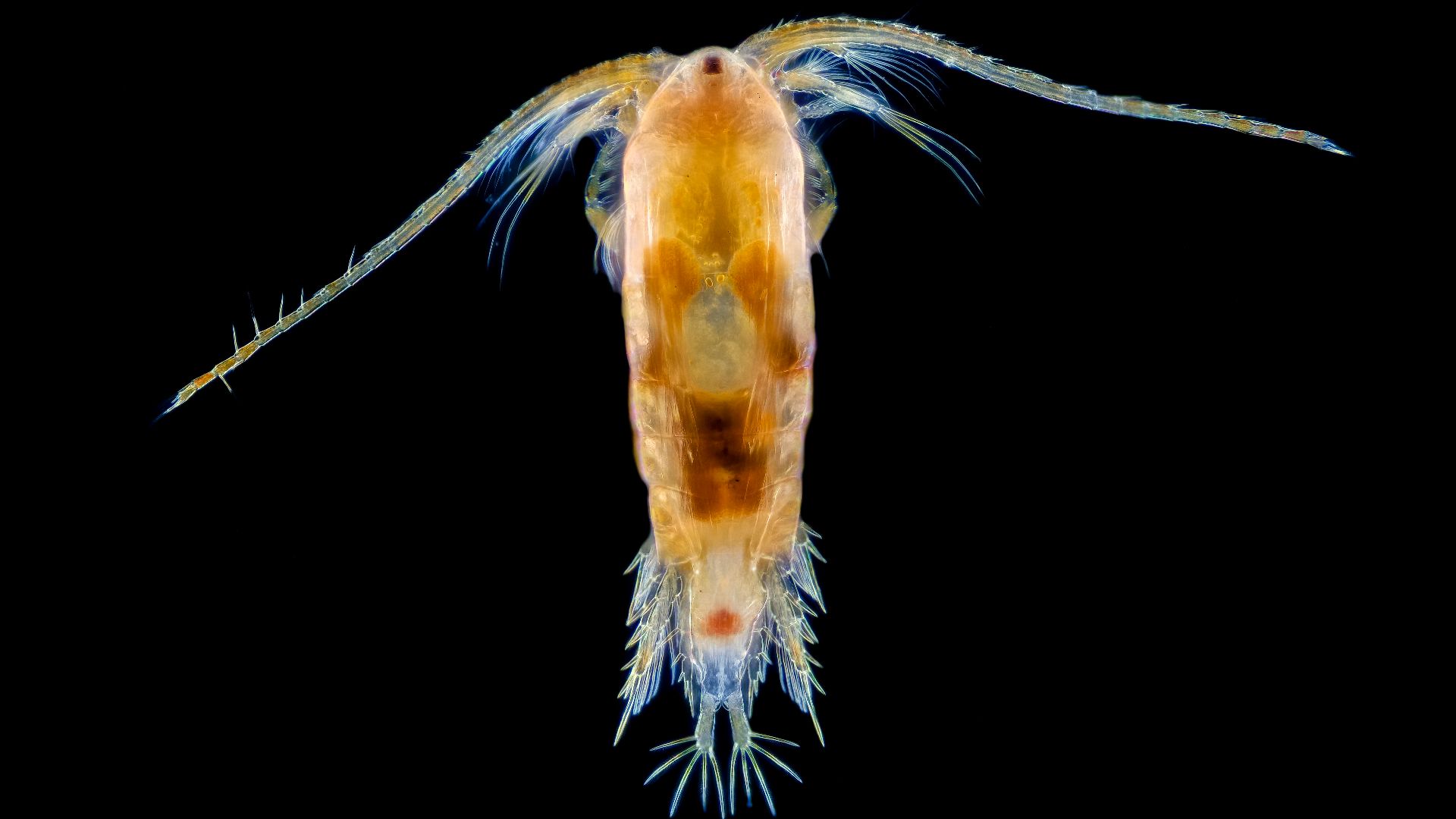 Brandon Antonio Segura Torres & Priscilla Vieto Bonilla, Wikimedia Commons
Brandon Antonio Segura Torres & Priscilla Vieto Bonilla, Wikimedia Commons
Understanding Whale Bonds
North Atlantic right whales aren’t known for forming long-term travel partnerships outside of mother-calf pairs. Yet, Koala and Curlew had been side by side for months. Scientists don’t fully understand the social structures among these whales, but this companionship suggests a deeper connection.
A Dangerous Detour
Unlike their usual migratory path along the Atlantic, the Gulf of Mexico presented new and unfamiliar risks. Without the established whale protection zones found in their traditional range, Koala and Curlew faced dangers they wouldn’t normally encounter. More ships and limited monitoring meant that their presence was risky.
The Biggest Threat To Right Whales
These whales swim just below the surface, and they’re hard to spot. Plus, they don’t move quickly enough to dodge an oncoming ship. In the Atlantic, speed limits are enforced during migration season. In the Gulf, no such protections exist, leaving Koala and Curlew vulnerable.
Another Deadly Risk
Entanglement in fishing gear has been a persistent threat to right whales, with many suffering injuries from ropes and nets. The Gulf has different fisheries than the Atlantic, and this means Koala and Curlew may have encountered unfamiliar hazards.
 Whale Freed After Days of Entanglement in Fishing Gear by The Weather Network
Whale Freed After Days of Entanglement in Fishing Gear by The Weather Network
Why Does This Matter?
Right whales in the Atlantic benefit from dedicated conservation programs, including protected calving zones and mandatory ship slowdowns. The Gulf of Mexico has none of these safeguards because right whales aren’t supposed to be here. Their unexpected arrival highlighted a major gap in marine protection.
 Protecting whales from ship strikes by CBS Sunday Morning
Protecting whales from ship strikes by CBS Sunday Morning
Learning From This Rare Journey
Koala and Curlew’s detour has left marine biologists with more questions than answers as this journey defied all expectations. Researchers are now analyzing tracking data and past case studies to determine whether this was an isolated event or a sign of shifting migration patterns.
The Latest Tracking Updates
By mid-February, Koala and Curlew were spotted off Florida’s Gulf Coast, suggesting they were heading back toward the Atlantic. Their reappearance near Tampa Bay confirmed that they hadn’t continued westward. Scientists hope they will safely make their way out of the Gulf.
Will We See Them Again?
If history is any indicator, Koala and Curlew could return to the Atlantic feeding grounds in the coming months. However, what remains unclear is whether they will follow the traditional migration path next time or attempt another unusual route. Marine researchers will be keeping an eye on them next season.
 Koala and Curlew, January 3 & 5, 2025 by Marineland Right Whale Project
Koala and Curlew, January 3 & 5, 2025 by Marineland Right Whale Project
Other Whales Might Follow
Animals often follow environmental cues and learned behaviors. So, if Koala and Curlew successfully found their way back, would more right whales take the same route? This is a possibility, but no one knows for sure yet.
What This Means For Marine Science
This journey has brought right whale conservation into the spotlight in an unexpected way. Their presence in the Gulf has shown that whales don’t always stick to predictable paths, which emphasizes the need for adaptable conservation strategies. Scientists and policymakers may now have to consider broader protection zones.
Whale Watching And Citizen Reports Helped
Koala and Curlew might have slipped through unnoticed if not for local boaters, beachgoers, and pilots who reported sightings. Whale tracking relies heavily on aerial surveys and trained observers, but in regions like the Gulf, everyday people played a key role.
The Gulf Coast’s Rare Encounters With Great Whales
Right whales aren’t the only unexpected visitors to the Gulf. While rare, large whales have occasionally been spotted here, including sperm whales and the elusive Rice’s whale, a species unique to the region. However, unlike Koala and Curlew, these whales are permanent or seasonal residents.
 Gabriel Barathieu, CC BY-SA 2.0, Wikimedia Commons
Gabriel Barathieu, CC BY-SA 2.0, Wikimedia Commons
Can You Help Protect Endangered Right Whales
The survival of North Atlantic right whales depends not just on scientists but also on public awareness and action. Boaters can slow down in known whale areas, and fishers can use whale-safe gear. Even supporting conservation policies and spreading awareness can make a difference.
A Journey That Left Scientists In Awe
Ultimately, Koala and Curlew’s unexpected Gulf adventure has rewritten what we know about right whale migration. Whether they were exploring or adapting to a changing ocean, their journey has raised important questions. As they (hopefully) return to safer waters, one thing is clear: their story is far from over.
 Koala and Curlew, January 3 & 5, 2025 by Marineland Right Whale Project
Koala and Curlew, January 3 & 5, 2025 by Marineland Right Whale Project


